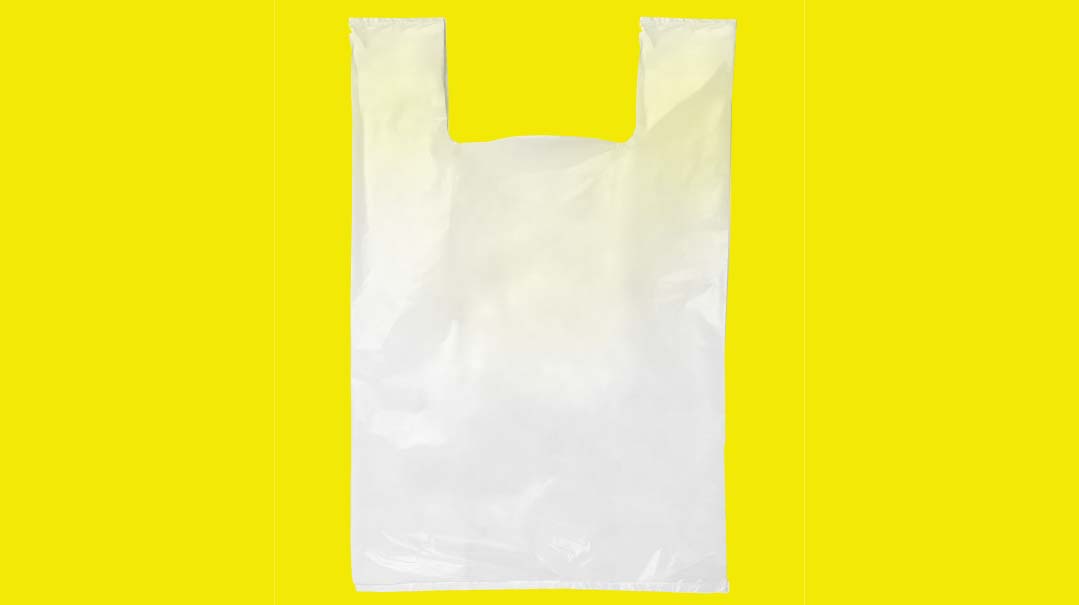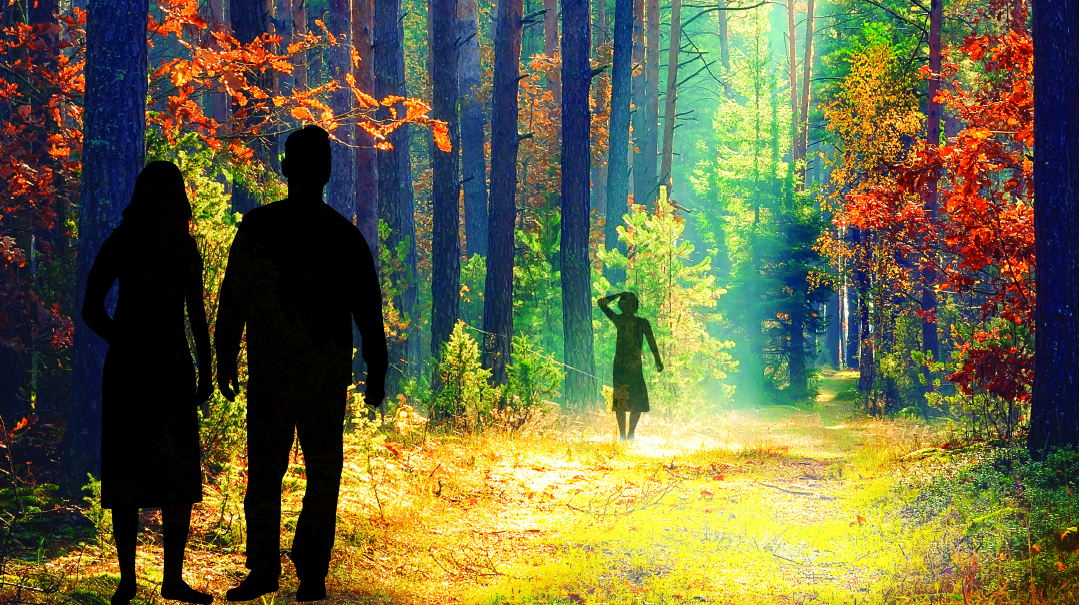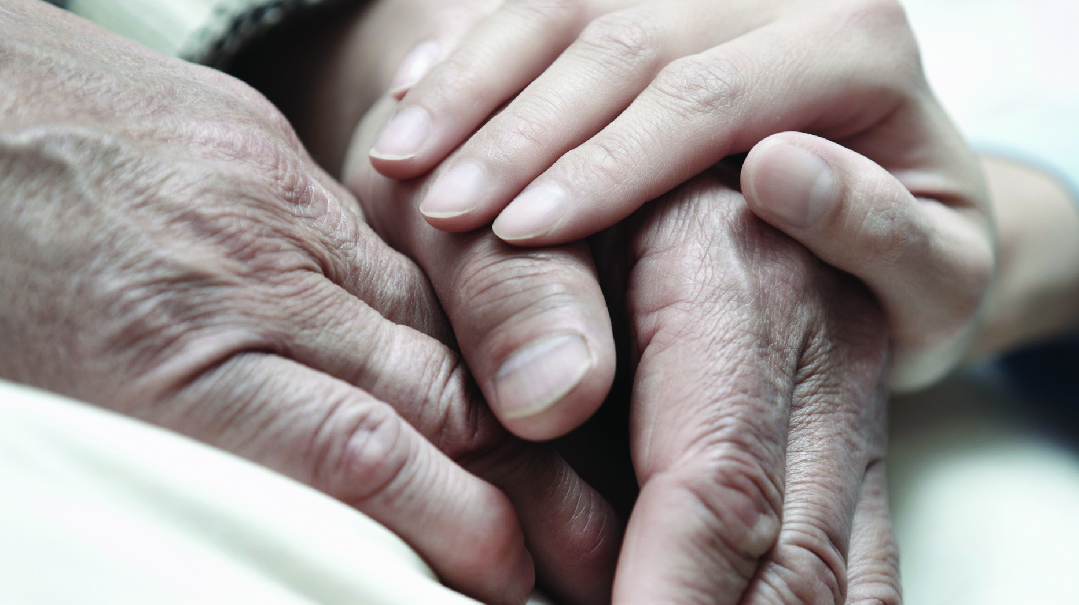New Beginning

My parents were people of faith, devout Catholics, while Larry’s parents, though nonobservant, were proudly Jewish. But what identity were we giving our children?

L
arry and I were the classic interfaith couple.
He had been bar mitzvah’ed and was proud of his Jewish identity, but had grown up eating pork and shrimp and had no problem marrying a non-Jewish girl. I had been raised Roman Catholic, attending Mass every Sunday, until, as a teenager, I found it difficult to accept the story of the Christian savior’s birth.
Larry and I married in 1981 in a secular ceremony and opted to live with no religion. We settled in a mostly Italian neighborhood on Long Island’s South Shore and had three children, whom we raised in a no-faith environment. This worked just fine — at least in the beginning.
One Saturday in 1997, we drove out from Long Island to New Jersey to attend the bar mitzvah of a son of one of Larry’s employees. We attended the kiddush and luncheon, and then got in the car to drive back home. As we were pulling away, the mother of the bar mitzvah boy waved us down and asked us if we had room in the car for another guest, a woman who had traveled from Manhattan by bus.
“Sure,” we said, as we motioned to the kids to move over to make room for another passenger.
When the woman got into the car, our oldest daughter, Jessica, then 11, turned to her and asked, “What religion are you?”
“I’m Jewish,” she replied. Then, to be polite, she asked Jessica, “And what religion are you?”
“I’m nothing,” Jessica declared, a huge pout on her face.
Hearing her say this brought tears to my eyes. If our daughter can say she’s nothing, we must be doing something very wrong, I thought. We’re failing our kids.
Out of the corner of my eye I could see that Larry noticed that I was upset. And I knew he felt the same way.
Although neither of us was religiously observant, we had both been guided and shaped by the respective traditions we had grown up with. My parents were people of faith, devout Catholics, while Larry’s parents, though nonobservant, were proudly Jewish. But what identity were we giving our children?
To be a good Catholic, I had to accept the church’s dogma unquestioningly, and since I wasn’t willing to do that, Catholicism was not an option. That left Larry’s religion, Judaism.
As it happened, our kids attended a Jewish summer camp — not because it was Jewish, but because it was the best camp in the neighborhood and it happened to be close to our home. Although the camp was not religious, the kids did pick up Jewish songs and some Jewish observances there.
The next step, I decided, was to enroll them in Hebrew school in order to give them a religious foundation. When I noticed an ad in a neighborhood circular announcing a Friday night open house at a local Reform temple, I told Larry I wanted to go.
“Are you sure?” he asked.
“Yes,” I replied.
At the temple, we were greeted enthusiastically, and our kids, who recognized their friends from camp, had a blast.
Shortly after the open house, we became members of the temple, after which the temple’s sisterhood delivered a welcome basket to our door containing two candles, a small bottle of grape juice, two challah rolls, and a printed card with the Shabbat blessings. When Larry came home from work, I showed him the basket.
“What should we do with this?” he asked.
“Uh, light the candles, make Kiddush, eat the rolls, and go to services?”
The warm welcome at the temple, combined with the subsequent membership basket at our doorstep, spurred us to begin attending services regularly, while introducing basic Shabbat observances: candlelighting, Kiddush, family meals, and Bircat Hamazon.
Since the Reform movement recognizes patrilineal descent, my children were embraced as Jews and accepted to the temple’s Hebrew school, where they learned about the holidays, prayers, and Torah, and became staunch Zionists.
Many times, I asked the rabbi of the temple about conversion, but each time he came up with some excuse why now wasn’t a good time.
In April 1999, when we were on the verge of celebrating Jessica’s bat mitzvah — which was postponed a couple of years because she had a lot of catching up to do in Hebrew school — I told the rabbi that I could not attend the ceremony as a non-Jew. After two years of hemming, he finally agreed to convert me. I stood before a Reform beit din and was declared a full-fledged Jew.
Several months later, just before Succot, a mutual friend introduced us to the rabbi of a nearby Conservative synagogue, who invited us to attend services on Simchat Torah — a holiday that Reform Judaism combines with Shemini Atzeret. We enjoyed the services at the Conservative synagogue and liked the people we met, so we began attending Shabbat morning services there, in addition to Friday night services in the Reform temple, which did not offer much of a Shabbat morning service.
During the Torah reading at the Conservative synagogue, in between each aliyah, the rabbi would select a verse to discuss. We would examine the Hebrew and consider the translation, and we were invited to ask questions as he posed questions to us. I greatly enjoyed this close reading of the Torah, floating out of the synagogue each week on a high.
In the summer of 2000, close to a year after we began attending services at the Conservative synagogue, we took our first family trip to Israel. What struck me most on that trip was how tiny a country Israel actually was and how dwarfed it was by its Arab neighbors. It was then that I realized how important a role every Jew in the world plays in perpetuating Jewish heritage. If we don’t give over this heritage to the next generation, I thought, it’s going to be lost.
We returned to New York deeply moved, our connection to Judaism further cemented. Shortly afterward, Larry’s grandmother, whom I loved dearly, passed away. She had come over to the US from Russia and had kept Shabbat and kashrut, but by the next generation, all of that had been lost. Mulling this over after her passing, I was again struck by the fragility of Jewish tradition, and felt compelled to protect it.
Agreeing that it was time to up our commitment to Judaism, Larry and I took the plunge and kashered our kitchen, with the help of the Conservative rabbi. The next day, our children — whom the Conservative movement did not consider Jewish — underwent conversion.
Originally, Larry’s aunt had planned to hire someone to say Kaddish for her mother, Larry’s grandmother, just as she had done after her father’s passing, but this time, Larry volunteered for the task. This was no small undertaking, as it meant that he had to pray three times a day with a minyan every day for almost an entire year — and he barely knew the prayers at that point. He didn’t even own a pair of tefillin yet, and he certainly had no idea how to put them on; half the time the straps would unwind and fall down his arm halfway through davening.
Morning and evening, he prayed at the Conservative synagogue, or at a nearby Orthodox shul. In the afternoon, he joined a Minchah minyan across the street from his Manhattan office, in the warehouse behind a wholesale electronics store. “I pray to big-screen TVs,” he would joke, referring to the huge TV boxes lining the walls all around the room.
He was in his early forties then, and for him to join minyanim of observant Jews who knew the prayers practically in their sleep involved an incredibly steep learning curve. Yet the members of each of the minyanim befriended and encouraged him. And because the electronics store across the street held a daily learning session before Minchah, he managed to learn some Torah each day together with them as well. He would come home and tell me what he had learned, and slowly, we both found ourselves growing interested in discovering more about Judaism. After the year of Kaddish was over, he continued davening three times a day, and we gradually became more and more observant, attending classes and lectures on Judaism together whenever we could.
All three of my children grew into ardent Zionists and made their way to Israel. Jessica attended college in Herzliya, and my son, Keith, and younger daughter, Alison, joined the IDF as lone soldiers. Eventually, each of them made aliyah.
When Jessica decided she was ready to get married, she realized that she had a problem: her Conservative conversion would not be recognized in Israel. She therefore signed up for a conversion course under the auspices of the Chief Rabbinate and underwent an Orthodox conversion in December 2014, after which she married a French baal teshuvah.
Larry and I made plans to join them and make aliyah as well, and we booked tickets through Nefesh B’Nefesh to fly to Israel for good. Two years earlier, however, he had been diagnosed with cancer, and several weeks before our planned departure his condition worsened drastically. Rather than us joining the kids in Israel as planned, I called them all back to New York to say goodbye to him. He passed away in May 2017, just eight days before our scheduled departure. He was 62.
About a week before he died, when he was receiving hospice care at home, the hospice agency sent a social worker to our house to speak to us.
“Are you afraid to die?” she asked Larry.
“No,” he replied. (At that point he was in so much pain that he was ready to die.)
“What about your wife?” she asked. “Are you worried about her?”
“No,” he said again. “She’s going to move to Israel and make a life for herself.”
Those words were his parting gift to me, for in saying this he gave me permission to go ahead and build a new life without him. He also imbued me with the confidence that I could actually go through with this move, which was quite a daunting task. I had to singlehandedly negotiate the sale of his business, sell our house, get rid of the stuff we had accumulated over 36 years of marriage, and then fly halfway across the world and begin a new life alone in a new country where I knew almost no one.
In retrospect, however, Hashem had been kind to me by taking Larry before we made aliyah. Had he passed away in Israel, I would have been alone, with no one other than my children to comfort me. Instead, I sat shivah on Long Island, where I experienced an outpouring of kindness from family, friends, neighbors, work colleagues, and fellow shul congregants. Surrounded with love and support, I was able to tie up all of the loose ends of our life in America before boarding a plane to Israel in September 2017 and rejoining my kids.
My daughter Alison had enrolled in a conversion program in the course of her army service, and about a year ago she, too, underwent an Orthodox conversion. I was present at the ceremony, and while I was there I overheard the rabbis on the beit din ask each other, “Aval mah im ha’Ima? (But what’s with the mother?)”
They meant me!
I considered myself a faithful Jew — but the Chief Rabbinate did not recognize my conversion, and as a result my home was not considered kosher, even though I had been keeping a kosher kitchen for 20 years! This was devastating to me, as it meant that I could no longer host any guests.
Here I was, a fresh widow in an unfamiliar country, trying to build a new life for myself, and I couldn’t even have anyone over for a Shabbos meal! How was I supposed to integrate into my new community if I couldn’t invite people or reciprocate the invitations of others? I began to feel like a prisoner in my own home.
I also realized that unless I went through a halachically valid conversion, I would not be allowed to be interred in a Jewish cemetery. Having recently buried my husband, I wanted to be sure that I, too, would receive a proper Jewish burial. I decided, therefore, to follow my two daughters and undergo an Orthodox conversion myself. (Keith, although living and working in Israel, has not yet taken that step.)
I enrolled in a comprehensive yearlong conversion course in English that covered everything from halachah to Jewish history to Tanach, tefillah, Shabbat, and chagim. The final interview and oral test were rigorous — the dayanim of the beit din threw questions at me rapid-fire, barely giving me time to answer before moving on to a harder question. The dayanim also wanted to meet and interview my daughters and ensure that they were living committed Jewish lives, post-conversion. Apparently, the three of us answered all the questions to the satisfaction of the beit din, because they authorized and presided over my conversion that same day, this past January.
To me, becoming Jewish has been a process similar to a marriage. You get married thinking you know the other person, but really you don’t. It takes a long time, decades even, to really learn your spouse — and even then, you only get to know the other person through paying careful attention to every detail: his every word, his facial expressions, his unspoken thoughts.
Larry a”h and I were able to sit at a table without saying a word and know what the other was thinking because we spent 36 years paying close attention to each other and caring about each other. Similarly, I think, a Jew’s relationship with Hashem is built through caring about the details and investing effort into Torah, mitzvot, and prayer.
Technically, I became Jewish the moment I immersed in the mikveh. But, as I noted at a recent ceremony after my conversion here in Israel, I don’t believe that a person becomes Jewish in one moment. “I’ve been becoming Jewish for nearly 20 years,” I said.
The dayanim had asked me to address a group of new converts attending the ceremony, and in my speech I told them, “You think that just because you completed a conversion program and you’ve received a certificate stating that you’re Jewish, that means you’re done. But the truth is that you’re just beginning.
“Next week,” I continued, “you’re going to kasher your kitchen for Pesach for the first time. You’re not going to know what you’re doing, and you’re going to have to ask a whole lot of questions. Will it be perfect? No! But next year you’ll do it better, and the year after that better yet. It’s a process, a new challenge each time, and as time goes on, you get better at it and embrace it more deeply.
“Being Jewish is not about holding a piece of paper,” I concluded. “It’s about facing the lifelong challenge of living as a Jew.”
(Originally featured in Mishpacha, Issue 764)
To have your story retold by C. Saphir, e-mail a brief synopsis to lifelines@mishpacha.com or call +1.718.686.9339 extension 87204 and leave a message. Details will be changed to assure confidentiality.
Oops! We could not locate your form.













